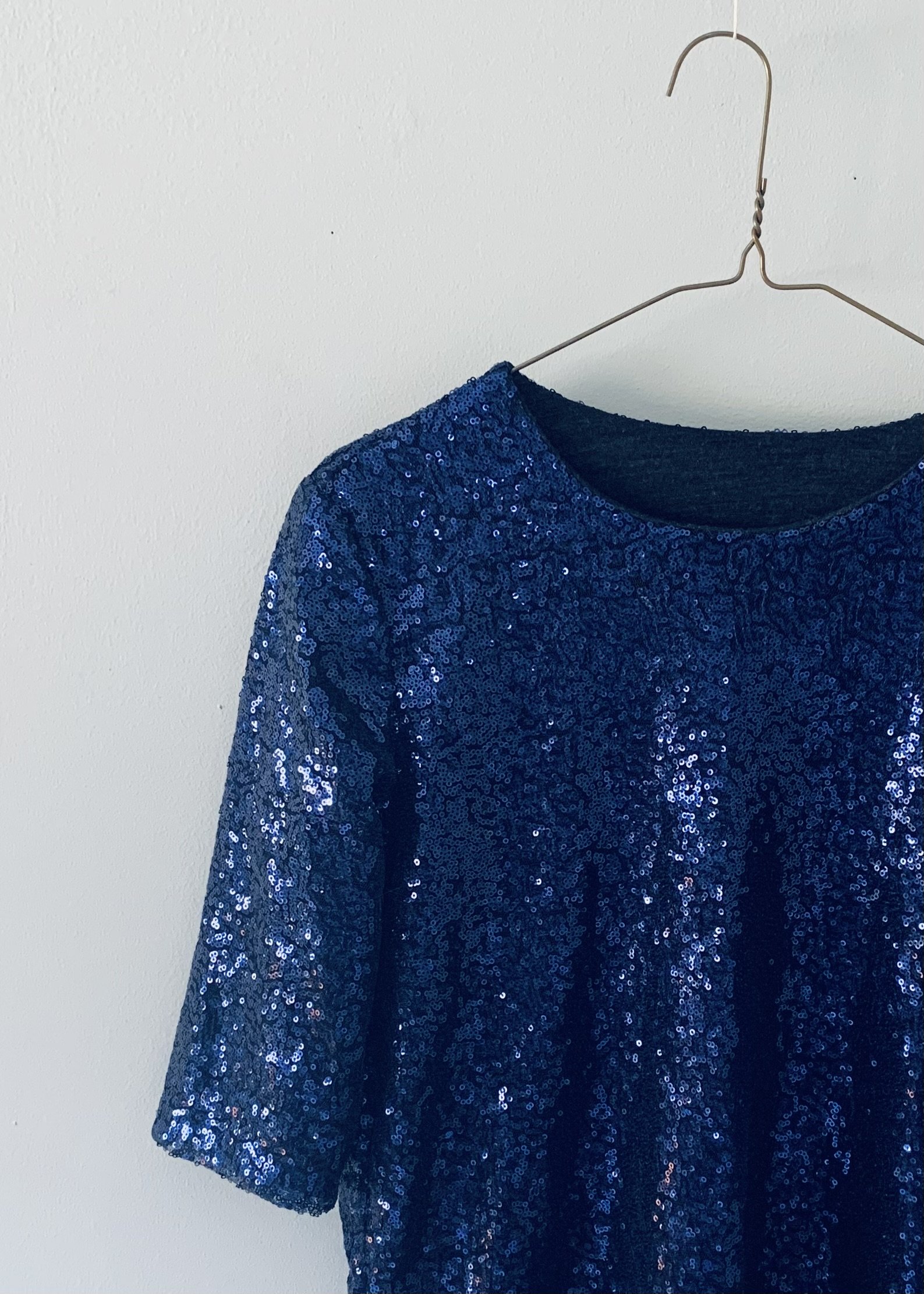Merry, bright -and WARM in a sequin Ruska Tee
/What is the best antidote to a chilly and dark holiday?- something warm and bright obviously. During our long, dark and chilly winters in Minnesota, I follow the northern European tradition of getting cozy with wool, lots of candles, twinkle lights, and a blazing fire at home. Building on this strategy of combining light and warmth, I also created the perfect top for a frosty holiday at home –albeit somewhat by accident.
I planned to make a fancy top out of navy sequined stretch fabric purchased from Fabric Godmother last year. I host extended family on Christmas eve and my go to hostess outfit is typically a party in a top. The beauty of this plan is that I can prep everything and at the last minute, throw on a pretty top for the party.
So I dug out the sparkly fabric and was a little chagrinned to find out for some reason, I only bought a measly yard and a half of this fabric which pretty much limited my pattern choices. But with sequins- staying simple is the best guidance- so I planned to use a tried and true Ruska tee pattern in Named Clothing’s Breaking the Pattern Book- it’s a tried and true “just right” tee- not too fitted and not too baggy. It also works with both stretch and woven fabrics if you alter the neckline.
The sequin fabric required a lining, and as I was rummaging through my fabric stash for possible linings, I laid eyes on some merino wool from The Fabric Store and it clicked- I could be cozy and bright if I lined my shiny top in cozy and warm merino wool.
Everything else about this project was easy. I checked a few blog posts about sewing with sequins- see SewDIY’s post here and ByHand London’s post here. Basically, there is either the careful or the quick approach to sewing sequin fabric. You could remove sequins from the seam lines or you can put a jeans or heavy duty needle in your machine and simply sew.
It’s probably easy to guess which method I preferred. I simply sewed through the sequins leaving a mini sequin storm in the sewing room. I wear glasses so no worries about eye injury from flying tiny sequin shards that are created when sewing through the sequined fabric. Also, just be aware that you will leave tiny sequin puddles for the first few times wearing it out from sequins that get busted and drop from the fabric with wear.
Basically, I made the T-shirt according to instructions (except for the neckline): one t-shirt out of sequin fabric and one out of merino. Then, I simply attached the merino lining to the sequin top at the neckline which created a great finish. An ingenious blend of cozy and twinkle! I paired it with True Bias Lander pants in black denim for laid back glamour. This project was so quick and easy I had time to paint my toe nails- navy of course to match my new top. I think it is a great stay at home glamour outfit. It may be sparkly fire on the outside, but it is soft, cozy on the inside.


































